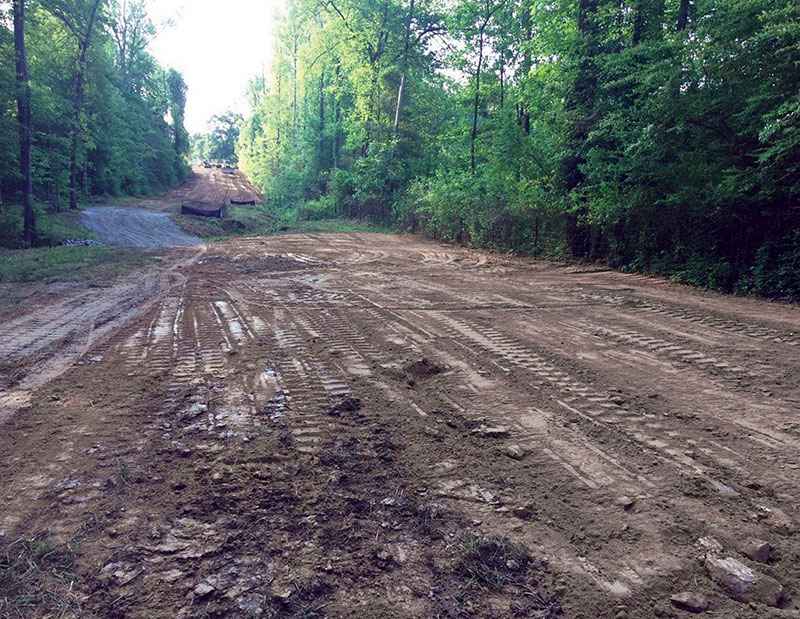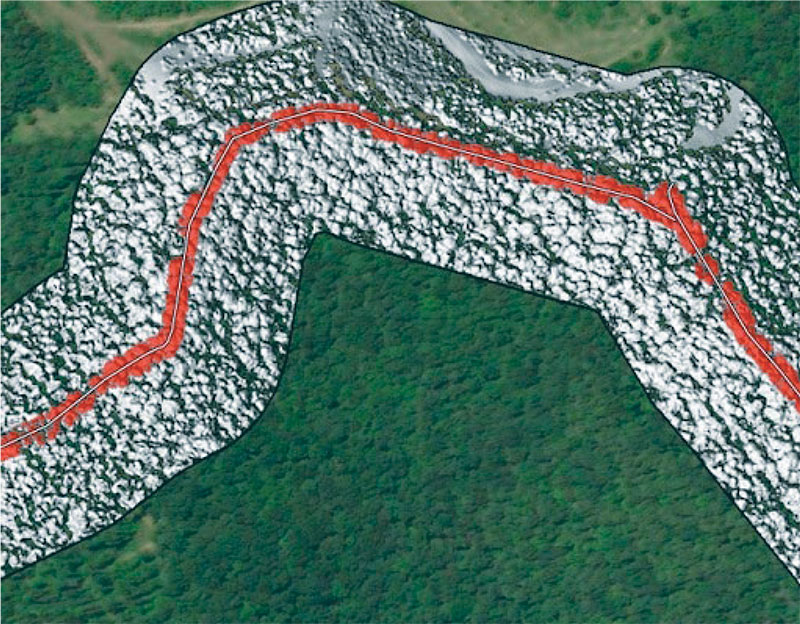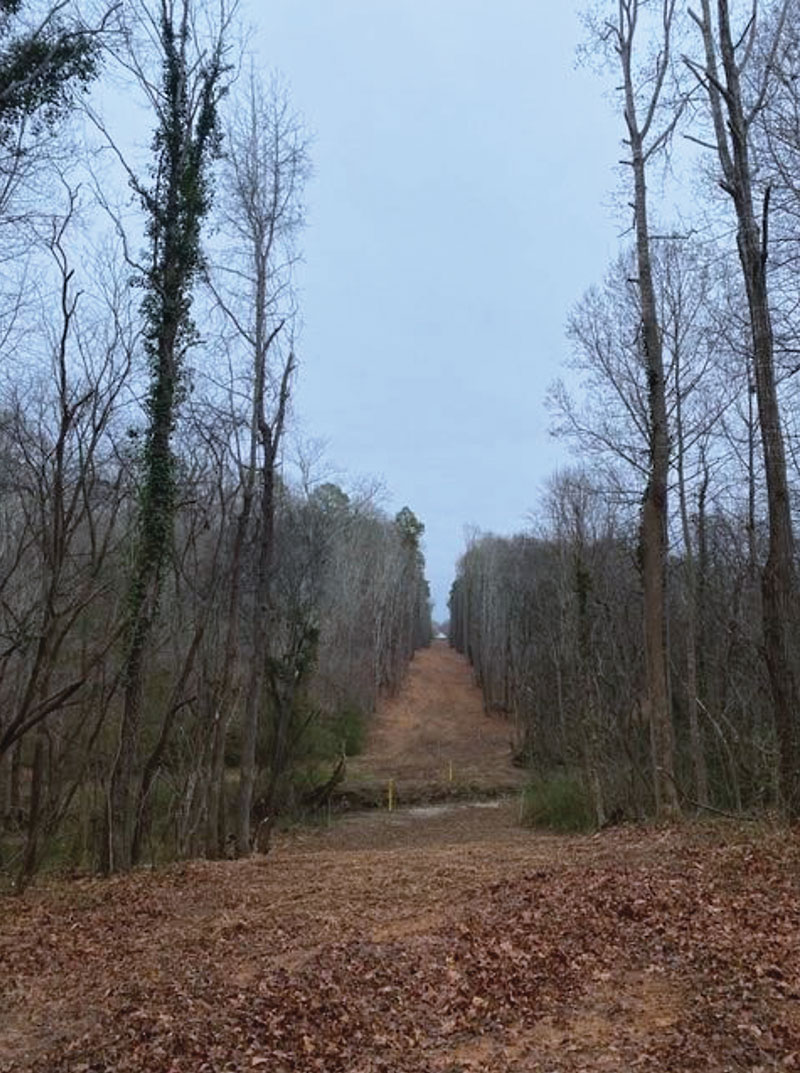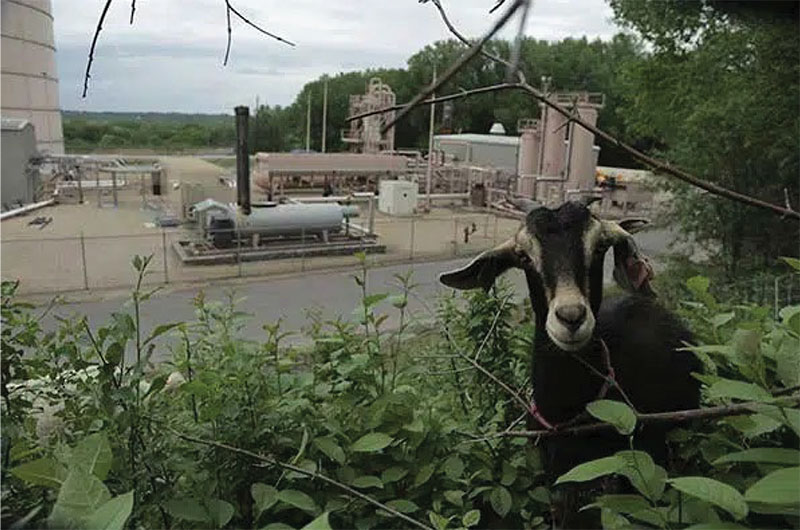June 2022, Vol. 249, No. 6
Features
Getting Creative with Vegetation Management in Pipeline ROWs
By Richard McDonough, North America Correspondent
Vegetation management is one of the critical aspects of maintaining rights-of-way (ROWs) for pipelines. Results of regularly scheduled inspections are among the key determinators for the implementation of specific maintenance efforts to control vegetation.

Inspections of ROWs can be done in different ways – usually through aerial surveillance and physical visits to the lands. The data gathered through these inspections may be reviewed internally by pipeline companies as well as using software programs and assistance of other businesses.
“From compliance to slope stability needs, organizations should make sure they’re identifying and monitoring changes to vegetation surrounding their pipeline rights-of-way,” stated Toby Kraft, CEO and co-founder of Teren. Businesses in the oil and gas industry use the company’s proprietary analytics to monitor land.
Teren provides pipeline operators with a vegetation encroachment analytic that monitors vegetation height and structure, using multispectral imagery and a digital surface model to assess vegetation structure and that on ROWs.
Without proper vegetation maintenance, companies risk compromising the proper functioning of pipelines and harming the environment.
Using encroachment analysis, companies can regularly monitor landscapes in three dimensions. Over time, they can monitor landscapes by collecting high-resolution LiDAR data and combining it with GIS.

Piedmont Natural Gas, a business unit of Duke Energy, inspects ROWs for encroachments on a quarterly basis, while annual inspections are done to monitor methane. In addition, as natural disasters such as hurricanes occur, which might affect pipeline ROWs, inspections are performed.
Within the company’s territory, “geography is a key reason for the different methods,” explained Steve Fields, manager of Fabrication and Transmission Rights-Of-Way at Piedmont Natural Gas. The firm uses aerial patrols in North Carolina, South Carolina and Tennessee; in Kentucky and Ohio, on-the-ground patrols are typically done.
“North Carolina has long runs of larger rights-of-way, so aerial teams are used in those areas,” Fields told P&GJ. “The rights-of-way in Ohio and Kentucky are generally going through more developed areas, so ground teams are used to put boots on the ground.”

At times, aerial inspections lead to subsequent on-the-ground inspections. For example, uses of adjacent pieces of land can directly impact the integrity of the pipelines in the ROWs.
“If we see construction on neighboring properties, we’ll inspect the rights-of-way to make sure that none of the activities on the adjacent lands are impacting the pipeline,” Fields said. “In areas of development, we want to make sure no excavations are underway that might impact the pipeline. We are also concerned about the weight of any heavy machinery that might put pressure on the ground. In areas of logging, equipment being used may be too heavy to enter our rights-of-way.”
Among techniques available for vegetation maintenance in ROWs are mowing and the physical removal of vegetation, the use of herbicides, grazing and browsing by animals, and the use of the acreage as pasture lands. The specific methods used depend on the owners and operators of the pipelines as well as the geography of the area.
“We primarily mow our rights-of-way,” said Fields, regarding pipelines for Piedmont Natural Gas. “We use brush hogs, weed eaters and mulching heads on skid steers to clear the land. We perform vegetation maintenance on a regular basis for both system integrity and for public safety.”
Encroachment of vegetation from neighboring properties can also present problems for pipeline companies.
“When trees, large shrubs or woody-stemmed plants grow too close to the boundary of … rights-of-way, maintenance tasks can become a struggle and damage to … pipelines can easily occur,” according to a statement to P&GJ from Townsend Corporation, a service provider, located in Muncie, Ind.
Encroaching root systems pose the biggest threat to underground pipelines. Soil surrounding most buried pipelines is less compact, and tree roots are prone to growing into these areas.
“It’s a common misconception that tree roots look like their branches above,” the statement from Townsend Corporation said. “Actually, roots spread out farther from the trunk than the branches do. While roots mostly grow in shallow soil, with enough oxygen they will keep growing in search of water and nutrients deeper into the ground.”
Left unattended, roots wrap themselves around pipelines, making access nearly impossible for right-of-way workers during maintenance and inspection. When this happens, roots can crack the protective coating of the pipeline and lead to corrosion. Additionally, if the tree in question gets uprooted during a major storm or natural disaster, it can rupture the pipeline.
Beyond damage from roots, Townsend Corporation noted the difficulties that may arise from thick canopies of tree leaves. This type of vegetation can block aerial surveillance of ROWs. To minimize that from happening, vegetation management efforts may also include pruning those trees.
While mowing and physical removal of vegetation in pipeline ROWs is quite common, another method is the use of herbicides to clear vegetation. In some cases, herbicides are used to clear all vegetation from a specific pipeline ROW; in other situations, an integrated vegetation management program is implemented.
Integrated Vegetation Management (IVM) Partners is a non-profit organization that develops programs and provides education on vegetation management and conservation best practices.
“Managing certain types of plantings is important,” Rick Johnstone, president of IVM Partners, told P&GJ. “You do research on what works, with the integrated part of the program being you have to kill the root system of the trees and the invasive plants and to use herbicides selectively to allow certain native plants to stay or come in and grow.”
According to Johnstone, mowing and hand cutting in ROWs may actually encourage tree sprouts growing from live roots. Selective use of herbicides can remove trees and allow grass, wildflowers and small shrubs to dominate.
“When annual mowing is replaced with integrated vegetation management, forbs germinate and provide pollinator food,” he said. “Natural gas [pipeline] rights-of-way can be managed as a pipe zone–border zone where cutting or broadleaf herbicides are used to maintain a 10- to 15-foot access path directly over the pipe routes. The area between pipes and along rights-of-way borders [are] managed for shrubs.”
The science of integrated vegetation management, according to IVM Partners, is based on the premise that “instead of strictly adhering to one type of vegetation maintenance practice, such as routine mowing or broadcast use of herbicides, research has shown that a combination of techniques … is best for maintaining a plant community that is complementary to energy corridor needs and pollinator habitat.”
One of the methods not used much in pipeline ROWs but used for vegetation management of other types of ROWs and lands near utility infrastructure, is the natural abilities of animals. In particular, goats and sheep are used.

The vegetation management within CenterPoint Energy “…clears rights-of-way for public safety purposes, including mowing, tree trimming and ground clearing, which allows for emergency response access, corrosion protection, routine maintenance access, third-party damage prevention, along with vegetation management activities near bird nests,” according to a statement from the Texas-based company. The business includes both natural gas and electric distribution operations, among other services.
CenterPoint Energy has been using goats at its Dakota Station Peak Shaving facility, a liquefied natural gas (LNG) site located along the Minnesota River Valley in Burnsville, Minn.
Goat Dispatch, a company located in Faribault, Minn., was hired in 2019 to develop a site-specific grazing plan, using grazing goats to control terrestrial-invasive species.
The CenterPoint statement continued, “The goats have made significant progress – not only do they eat the buckthorn leaves, but they also eat the bark. When the bark is chewed off the buckthorn shrubs, it weakens the plant and eventually kills it. The University of Minnesota discovered that goats are very effective at destroying buckthorn seeds when they eat the fruits and pose very little dispersal risk.”
One of the benefits of using goats and sheep, according to Andrée Soares, president of Star Creek Land Stewards, is the hoof action of both goats and sheep.
This business, headquartered in Los Banos, Calif., includes about 7,500 goats and sheep.
“The hooves of the animals help breakdown the thatch – the buildup of the vegetation on the top of the ground – and work the thatch back into the soil,” she told P&GJ. “In addition, the hoof action of the animals helps break up the top layer of the soil. Together, these actions help recharge groundwater.”
Soares explained that specific animals need to be suited for the specific environment.
“Both goats and sheep eat the vegetation that they are used to eating,” she said. “Their palates are trained by their mothers. They will pick and choose what vegetation they like to eat. Sheep are more grazers – nose-down eating; goats are more browsers – typically nose-up eating. Goats can sometimes reach vegetation as tall as five feet high if it’s vegetation that the goats want to eat. Sheep do better on dry or green grassy areas, while goats will eat denser brush in woody areas.”
One of the keys to using goats and sheep for vegetation management, Soares noted, is to assure the animals’ access to water – whether that be in natural settings like a stream or whether the water is trucked in for the animals. She also explained that the time of year may also impact the use of sheep and goats: “Not every month is optional.”
Another method of vegetation management in pipeline ROWs is to work with neighboring property owners and lessees who operate farms adjacent to the ROWs.
Fields of Piedmont Natural Gas explained that cows and other similar animals can feed on the grasses grown on these acres within the ROWs. This can then minimize the need for mowing: “We welcome working with farmers who have pasture lands next to our rights-of-way and are interested in using our lands.”
Whatever methods are used to inspect pipeline ROWs and whichever techniques are used to manage vegetation within those ROWs, the goals are the same – system integrity and safety of the public.
Author: Richard McDonough writes on energy infrastructure-related issues in North America. He can be reached at newsaboutamerica@gmx.us.





Comments